Raketa Big Zero Malevich Watch (Live Pics & Price)
Russian painter Kazimir Malevich’s groundbreaking 'Black Square' recreated in stone mosaic on the dial of this 100% Russian watch.
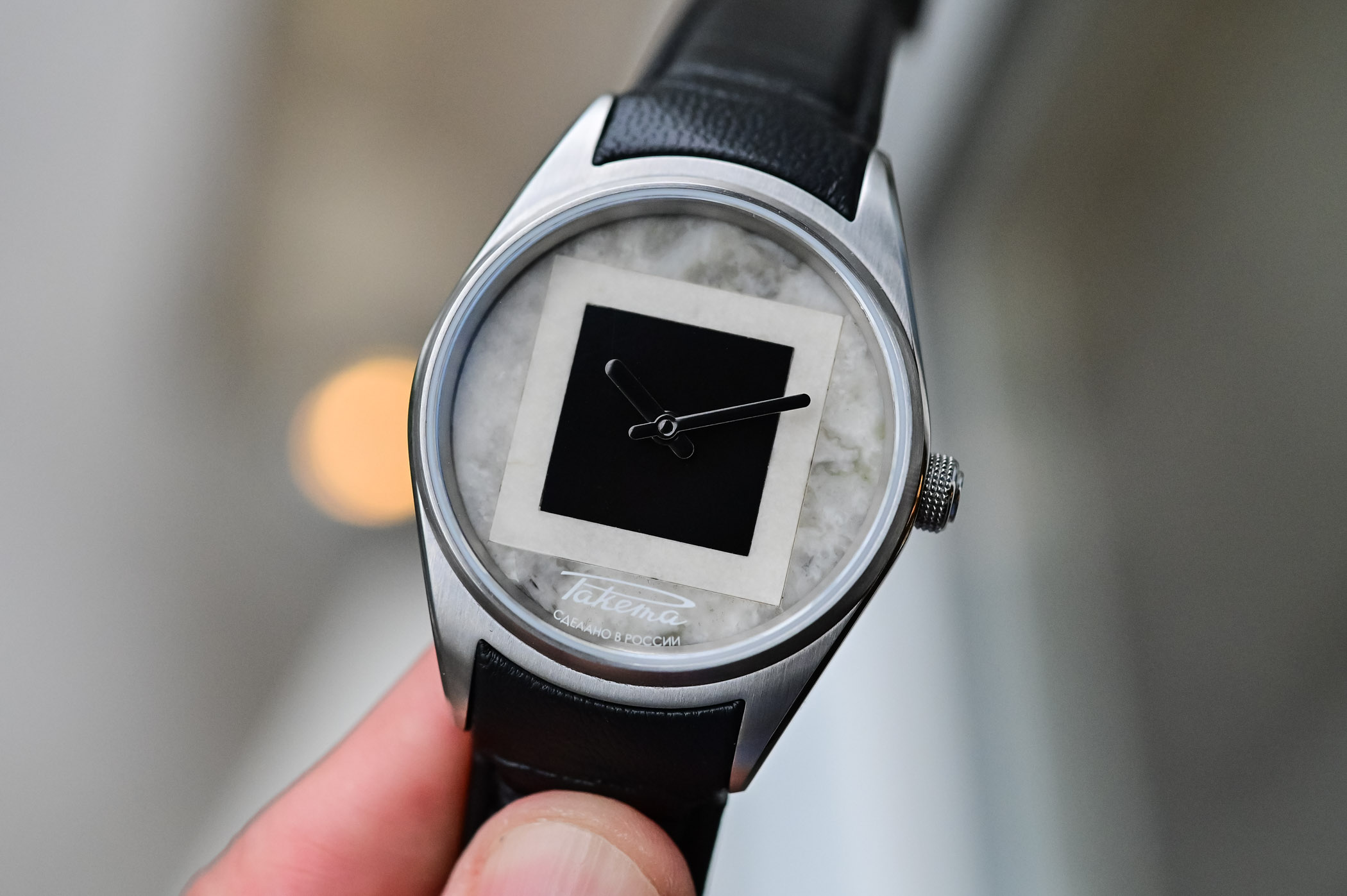
Russian watch brand Raketa is back with another surprising watch inspired by Russian avant-garde artist Kazimir Malevich’s radical Black Square painting. A far cry from Raketa’s tool watches, the limited edition “Big Zero Malevich” features a big black square smack in the centre of the dial. A collaboration between Raketa and the State Tretyakov Gallery in Moscow, where the painting is exhibited – Russia’s main watch factory and Russia’s main museum of national art respectively – the Black Square might not appeal to everyone, but it is a trophy for admirers of Malevich’s revolutionary abstract art and those on the hunt for something off the beaten conservative track.
You might remember that Brice recently travelled to Saint Petersburg to cover the revival of the historical Russian watch brand Raketa. His account is fundamental background reading to get a feel for this unusual and inspiring brand (in-house choir included). Reading the story behind Raketa is like reading a good chunk of the country’s history; from the Russian Empire of Peter the Great to the communist Soviet Union, and from the dissolution of the USSR in 1991 to the present day. Recently revived by a team of British, French and Swiss entrepreneurs, Raketa is back on the watchmaking scene with its distinctive “Made in Russia” watches. We’ve covered both the Polar watch and the idiosyncratic counterclockwise Russian Code watch so far. Today we’re going to take a look at an even more polarising watch with a large black square in its centre made from stone mosaic, a fitting tribute to the brand’s origins.
Brief History of Raketa
In 1721, Peter the Great established a lapidary workshop in Saint Petersburg (Imperial Peterhof Factory) to cut precious and semi-precious stones to adorn the tsar’s family jewels and palaces, as well as marble for monumental works like St Isaac’s Cathedral. Following the Russian Revolution and the abolition of the monarchy in 1917, the factory adapted to the times and by 1934 was producing large red Kremlin stars to adorn official buildings and was even commissioned to cut stone for Lenin’s mausoleum in 1924.
The factory was destroyed by Nazi troops during the Seige of Leningrad and rebuilt in 1944. To reduce Soviet dependence on western imports, Joseph Stalin gave orders to manufacture watches under the brand names of Pobeda and Zvezda. However, things really took off in 1961 following an exciting chapter in the US/USSR space race starring a Pobeda watch. Cosmonaut Yuri Gagarin wore a Pobeda navigator’s watch (Sturmanskie) on board the Vostok 1, the first manned spaceflight in history. In honour of Gagarin’s mission, and celebrating the fact that a Pobeda watch was the first watch to go into space, the brand adopted the name Raketa (rocket in Russian) in 1961. With commissions from the Red Army and the Soviet Navy, by the 1970s Raketa was producing around five million watches a year and in 1980 it was the official watch of the Soviet Olympic Games.
When the Soviet hammer and sickle flag was lowered for the last time over the Kremlin in 1991, Raketa went the way of many Soviet-era factories and struggled to adapt to the capitalist system. Following a comprehensive modernisation programme in 2011, the Raketa watch factory can produce its movements from head to toe, including the hairspring and escapement. However, ‘modernisation’ does not mean state-of-the-art CNC machines of CAD software at Raketa, where machinery from the Soviet era is still in use today.
Kazimir Malevich’s “Black Square”
When Kazimir Malevich’s painting Black Square was unveiled at the Last Futuristic Exhibition of Paintings 0,10 in Petrograd in 1915, it marked a point of no return between old and new art. The most abstract painting of its day, his Black Square was literally a black square inside a white frame on a 79.5cm x 79.5cm canvas. Malevich (1879-1935) was a Russian avant-garde artist whose work exerted a profound influence on modern art. As the founder of ‘Suprematism’ – an art movement highlighting basic geometric forms painted in a stark and limited range of colours – his concept of art revolved around the “supremacy of pure artistic feeling” rejecting the visual depiction of objects. His bold geometric shapes found their most powerful expression in his painting the Black Square (1915). Malevich’s radically abstract and highly disturbing (at the time) painting was a ground zero for future movements to emerge.
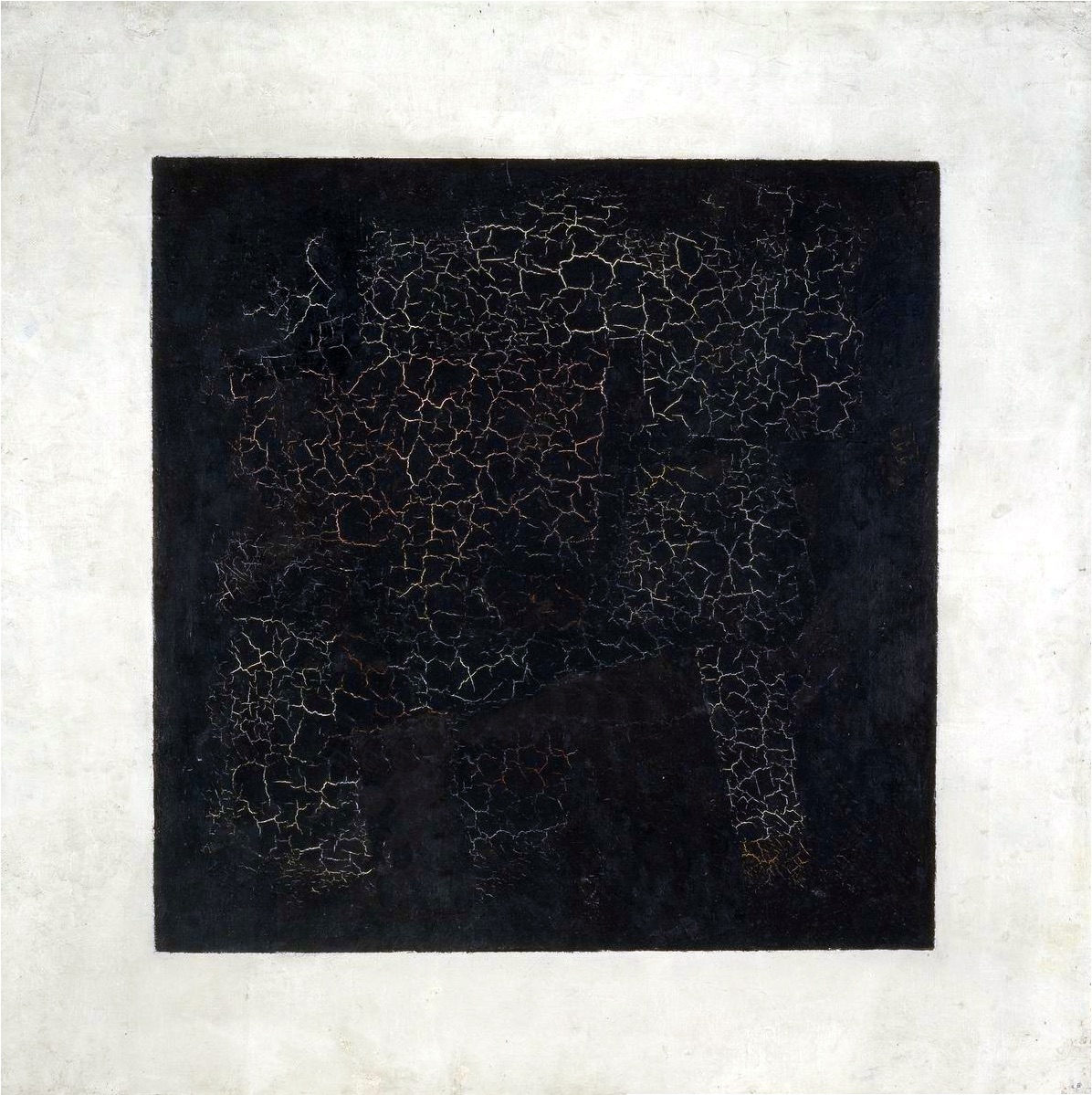
When questioned about the meaning of his Black Square, Malevich explained that it symbolised a “Big Zero”: the end of one artistic period and the beginning of another radically new artistic reality divorced from our physical world. Abstract shapes, impervious to gravity, floated in an endless white cosmos. For most onlookers, the prospect of non-representational was a terrifying one indeed, but Malevich’s painting has transcended as one of the defining works of Modernism.
Mosaic Dial
Time has taken its toll on the black paint of Malevich’s work. The black paint has cracked revealing parts of the white background, a bit like the traces of mortar you can see in crazy paving. To capture the current state of the painting, Raketa has used a micro-mosaic technique with black jade, white jade and violan. Not only is it an effective way to capture the uneven surface of the painting, but it is also a direct reference to the brand’s origins as a stone-cutting or lapidary factory. The natural patterns inside each natural stone recreate the cracks and ensure that every watch is unique. To prevent any distractions from the artistic rendering on the dial, the hour and minute hands are black and the brand name is printed in white on the glass at 6 o’clock.
Russian-made mechanical movement
The 38.8mm stainless steel case, which is brushed and polished, features a mineral exhibition caseback to view the in-house automatic calibre 2615 made at the Raketa Watch Factory in Saint Petersburg. Running at a frequency of 18,000vph, the movement offers 40 hours of power and is decorated in traditional Raketa style with Neva waves on the large bi-directional rotor and bridges. Coming full circle with the Malevich-themed dial, the caseback is engraved in Russian with a quote by Malevich: “…all the phenomena of the world are reduced to a big Zero – or Zero contains all the phenomena of the world“.
Availability and price
The Raketa Big Zero Malevich Watch comes on a black leather strap with a red lining. It is a limited edition of 300 watches and is currently available online and in Raketa stores, as well as at the official store of the State Tretyakov Gallery. The price is EUR 1,450 and part of the proceeds will go to the Tretyakov Gallery where Malevich’s painting is exhibited.
For more information, please visit raketa.com.

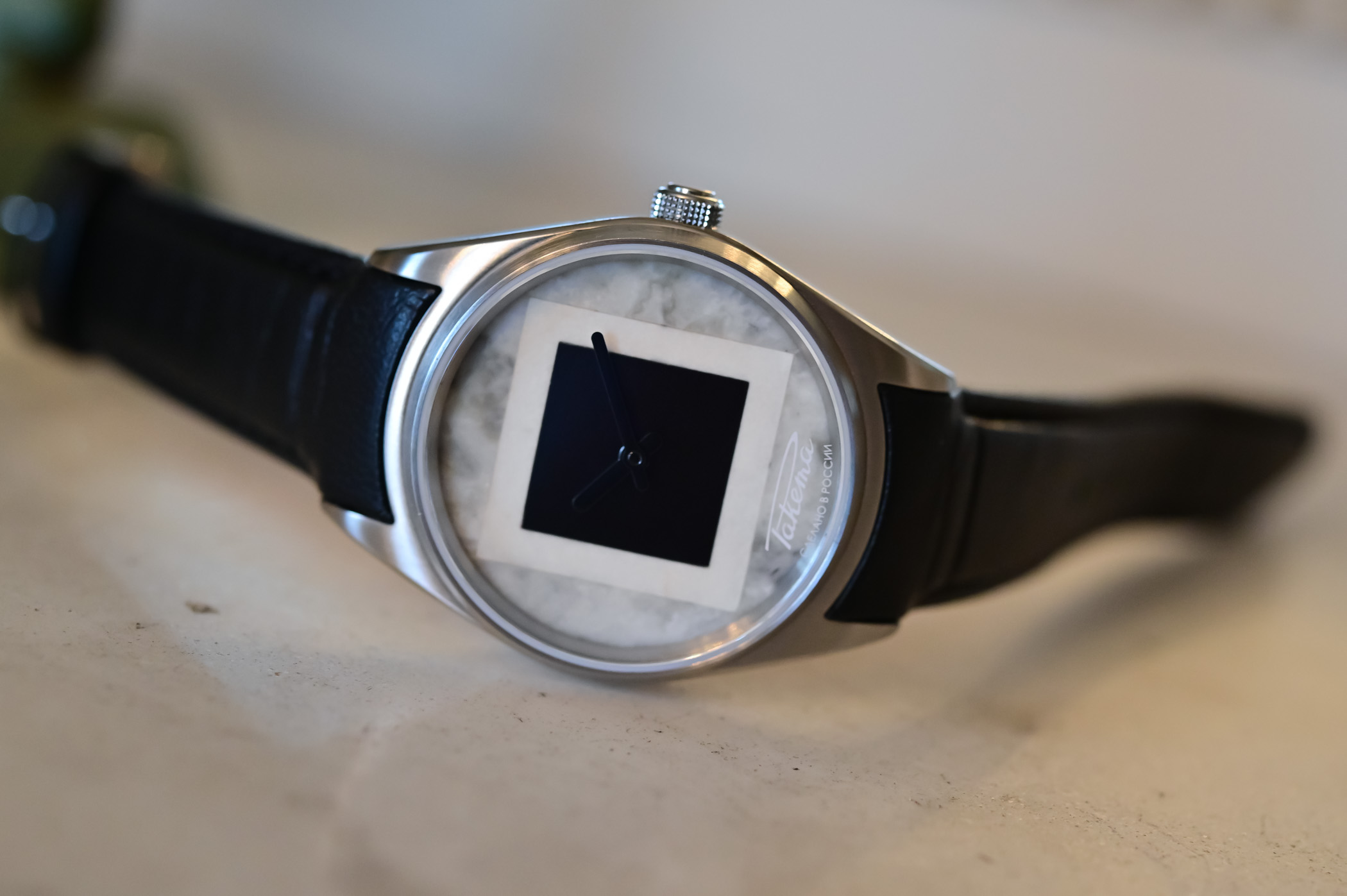

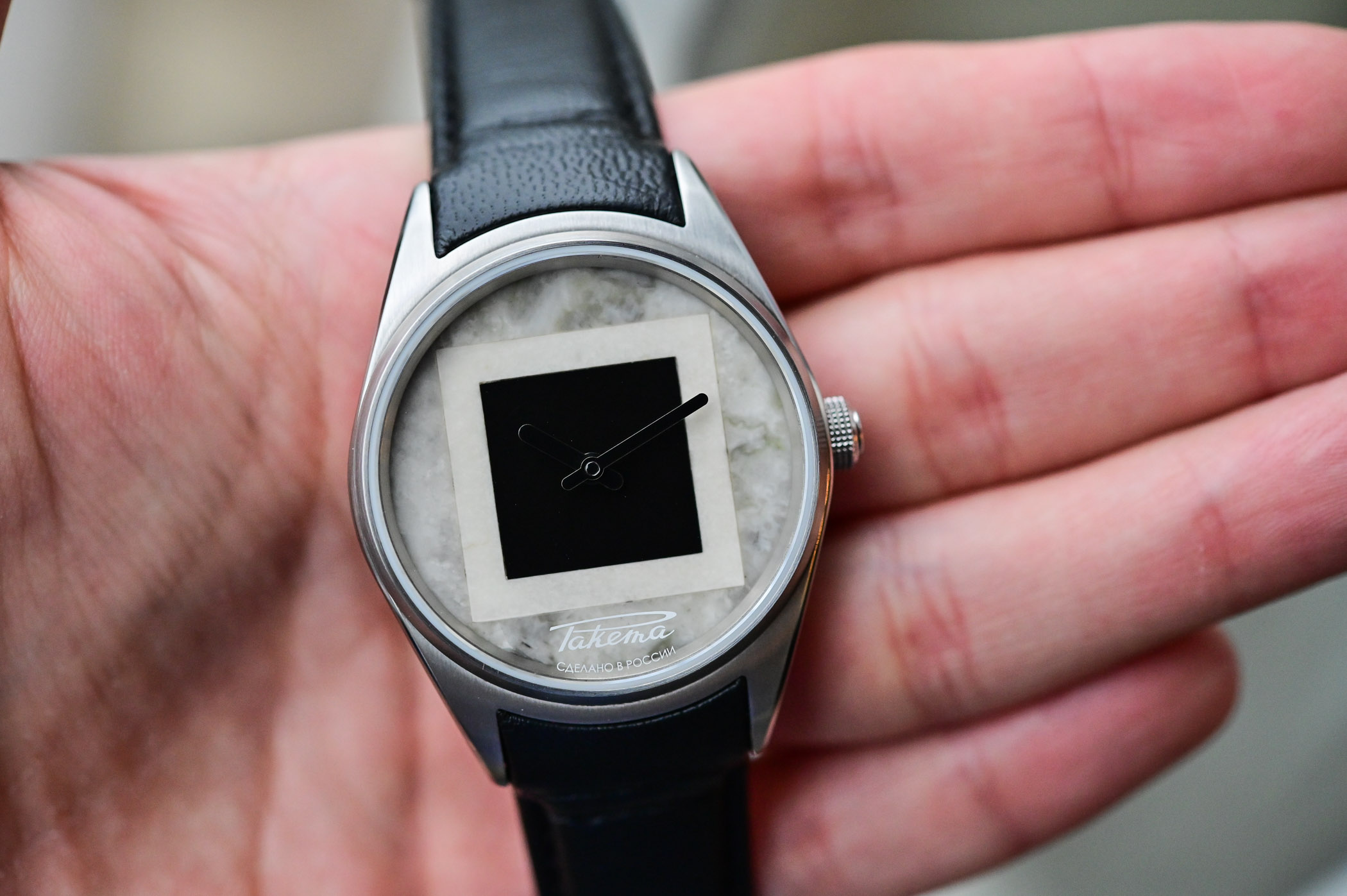
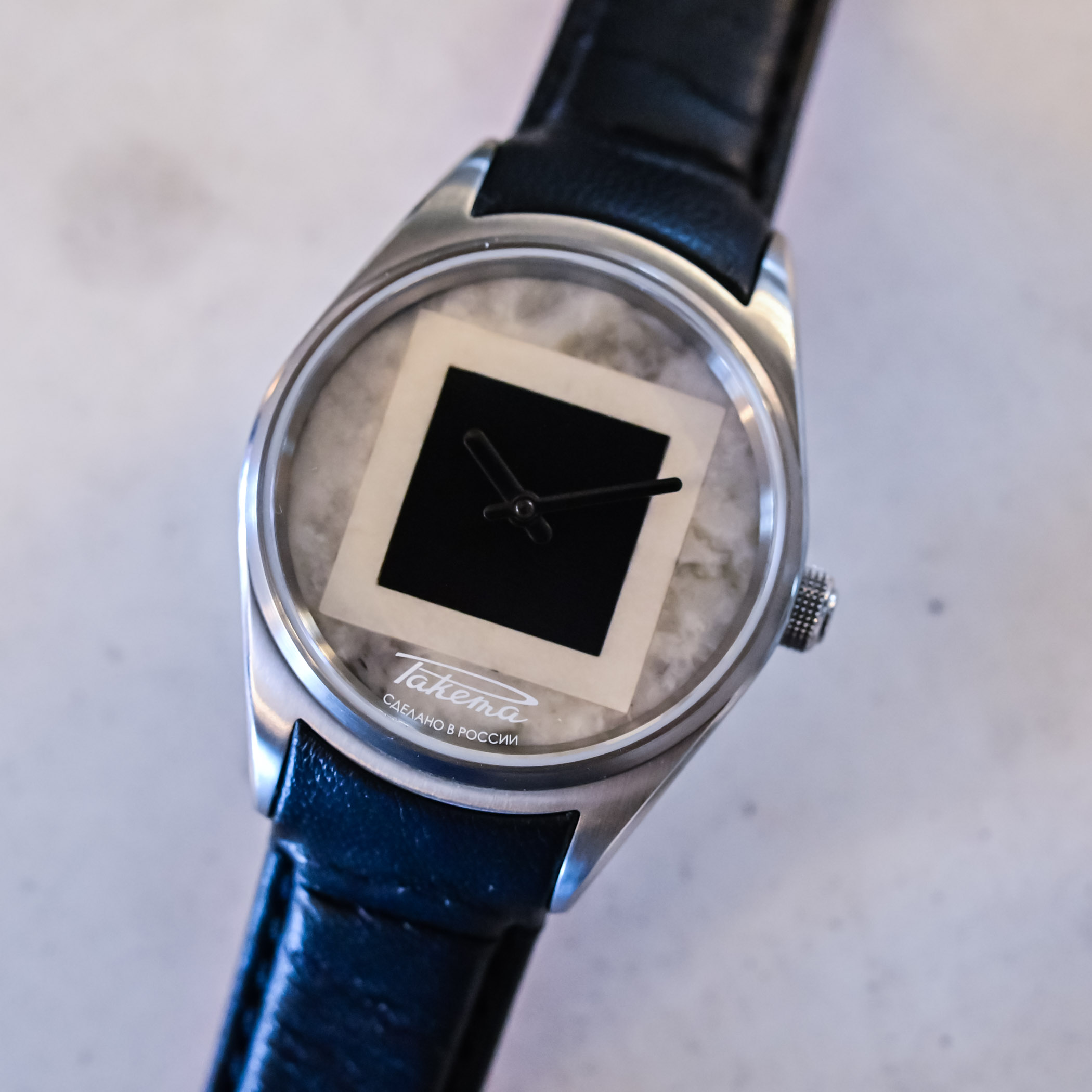
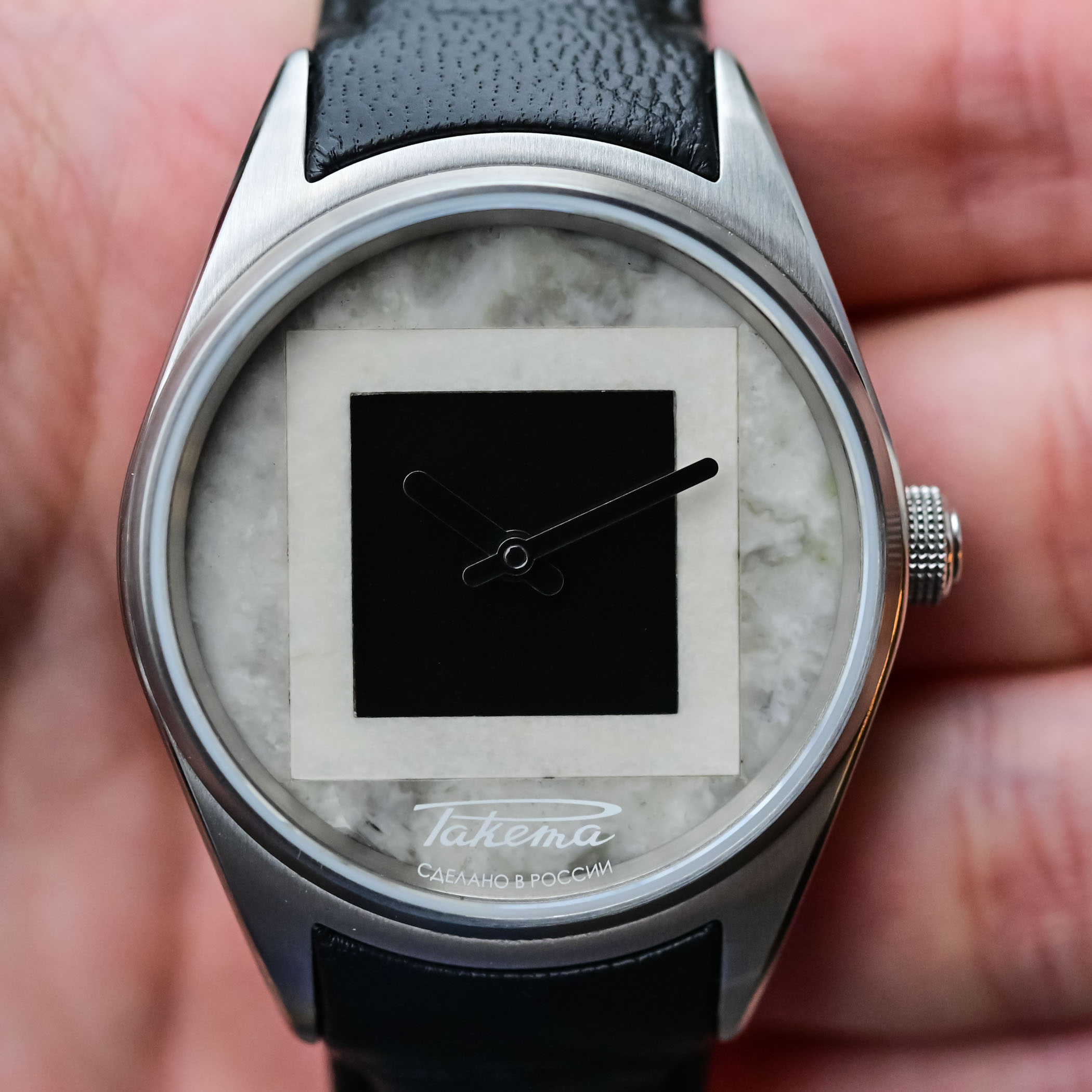
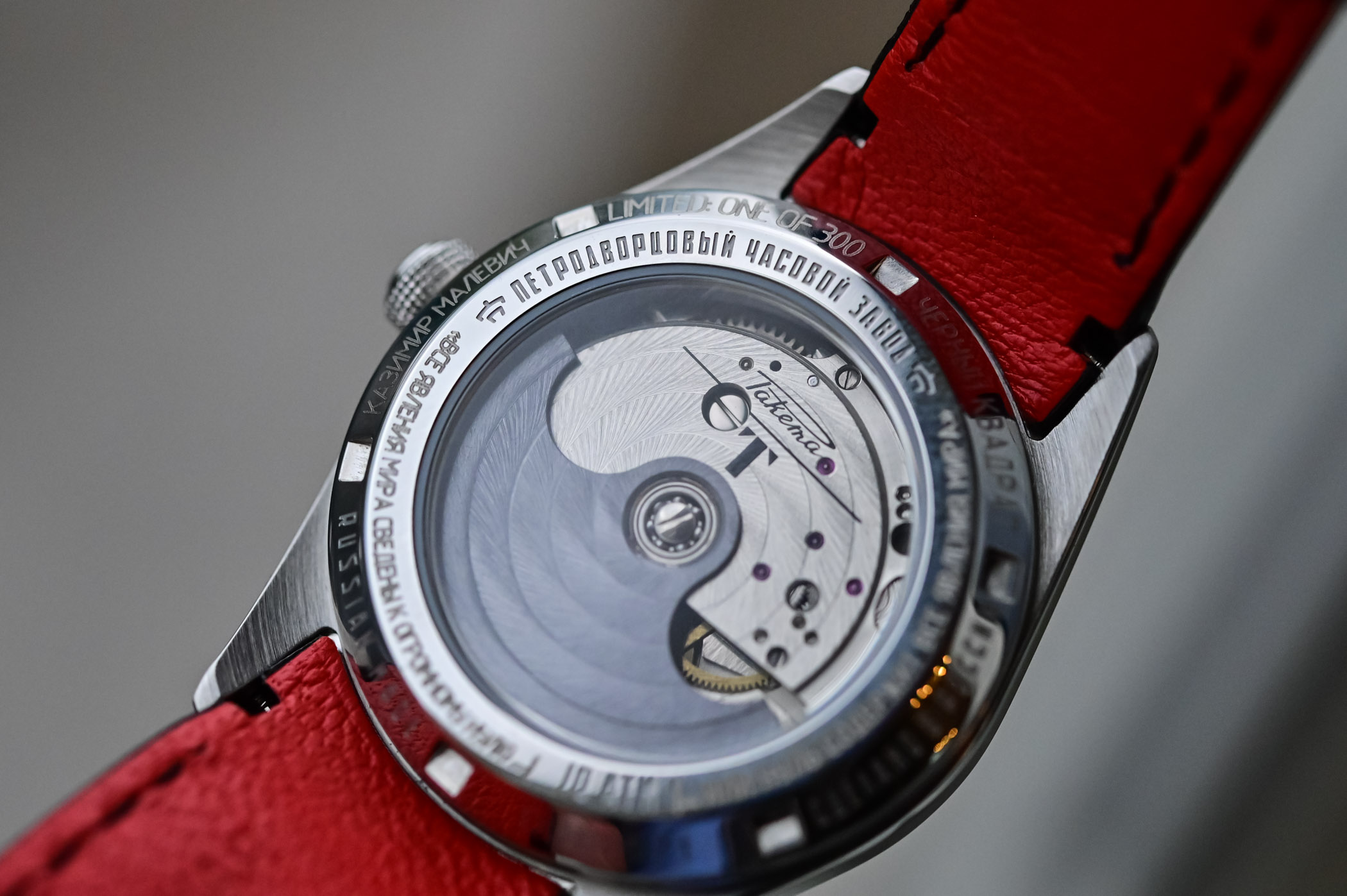



1 response
The strap is too shiny for a bold watch face. I have an old Rateka and I love wearing it , but I’m not sure about this one